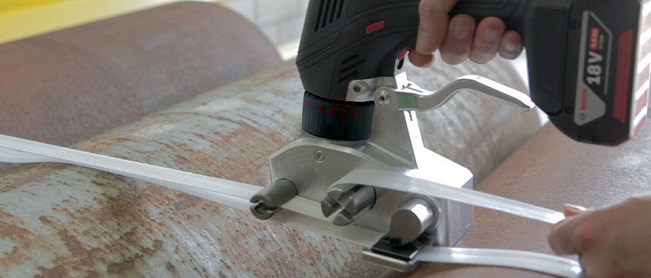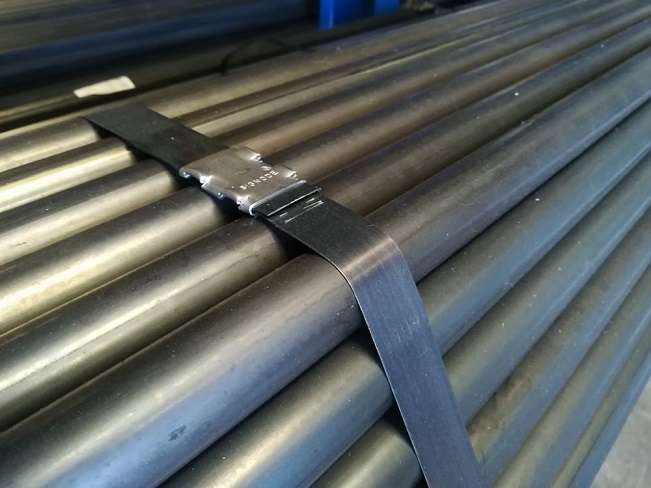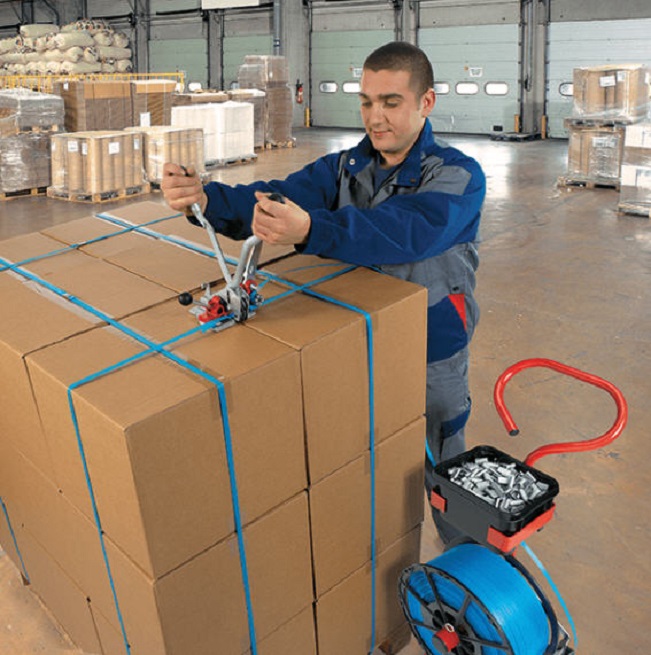Strapping is one of the most popular solutions for securing shipments in a wide range of industries. Also known as banding, this process uses a plastic or metal strap to palletise, unitise or bundle different products together. It can be applied either manually using a hand tool or automatically using a machine. Both processes use a strap or band which is wrapped around the product and is then fastened before the excess material is removed. But with so many different types of strapping materials and techniques, how do you know which one is the best for your business?

Strapping Materials
Polypropylene
Polypropylene strapping is a light and versatile option ideal for reinforcing, sealing and securing light loads. It features elastic properties, and it doesn’t corrode or deform. Furthermore, it’s scrape and bump resistant, making it great for pallet strapping on products that are going to be shipped long-distance or are going to be stored for a long time. Most polypropylene straps have a resistance of up to 250kg, and they’re easy to work with. Polypropylene straps can be sealed using security seals and self-locking buckles. Additionally, this is the only material that can be used with manual, semi-automatic and automatic strapping machines.
Polyester
Polyester strapping, also known as PET strapping is the strongest strapping material, which makes it suitable for use where polypropylene isn’t. Polyester strapping can be secured extremely tightly, as the material features a decent amount of flex, but doesn’t break. Polyester is UV and moisture-resistant, making it great for long-term storage and transport where high-strength is a must. Another great thing about polyester is that it can be made from recycled materials, making it eco-friendly. Additionally, you can use sealers and tensioners to tighten and secure it.

Steel
Steel strapping is the strongest strapping solution, ideal for heavy-duty loads that feature rough and sharp edges and loads that won’t compress. Steel strapping doesn’t flex like plastic strapping options, so it’s better suited for bulky and solid loads. Furthermore, steel strapping can be secured without using seals, but you do have to use tensioners, sealers and tools that are meant for it specifically.
Corded Polyester
This type of strapping material is the most resistant out of all strapping materials, and it’s best suited for sealing and fixing fragile and delicate items. Its textile, light material makes it easy to work with, and won’t rot, mark or rust surfaces. it offers great resistance for heavy-duty loads, and it can be knotted so that the item you’re strapping is better secured. This strapping material is best used manually.

Strapping Techniques
Strapping is either applied manually with the help of strapping tools or semi-automatically and automatically using machinery. The latter doesn’t require any extra tools and seals to fasten the strapping, as the machines usually friction weld the strapping to the seal. Manual strapping, on the other hand, requires equipment to create tension in the strap, tighten and seal it securely. If your business operations include shopping products of various sizes, a tensioning tool and a sealer tool will help you complete the packaging process. You can use these tools vertically, so you can easily reposition yourself when strapping odd-shaped loads. There are so-called combination strapping tools that are basically a sealer and tensioner combined in one tool. However, these tools can only be used horizontally.
Semi-automatic and automatic strapping is suited for businesses that need to strap a lot of packages on a daily basis. Automatic strapping machines can strap up to 60 or more packages in a minute. The fact that they also automatically seal and tension the strapping makes them speed up the process considerably. Always make sure you wear the necessary PPE when strapping.
How to Choose the Right Solution?
Now that you have a general idea of what the different types of strapping materials and methods are, how do you make sure you pick the right solution? There are a few important factors you need to consider to make sure you pick a material that has the strength and properties your loads require. As far as strapping methods go, it will come down to how much strapping needs to be done on a daily basis. Some of the questions you need to ask yourself are:
- How do you intend on using the strapping material?
- What’s the application?
- What’s the weight of the load?
- Is it a static or dynamic load?
- Will the load have to withstand harsh weather?
- Will the strapping be manual or automatic?
- How long will the loads be strapped for?
Choosing the right material and strapping method will not only significantly improve the safety of your loads but also the efficiency of your everyday operations. This can help your business grow, especially if strapping loads is a significant part of your business. That being said, it’s better to take the time and do your due diligence before settling for a strapping solution.
























